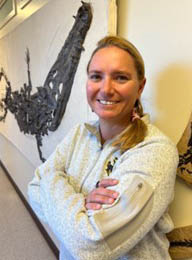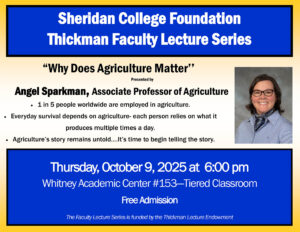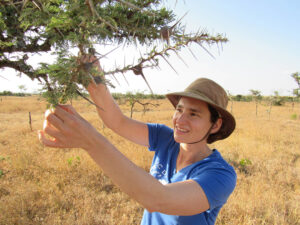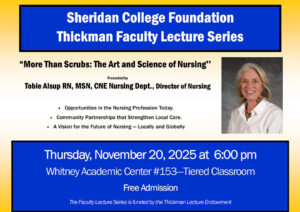
- This event has passed.
Science Museum Lecture Series: Whale Falls and the Fossil Record with Laura Vietti

Join us Wednesday, October 29 at 7 p.m. in the Mars Ag Center, room 201 for a lecture by Laura Vietti titled: Life after Death: A review of Whale Fall Scavenging Successions and Why It Matters in the Fossil Record
Also available via Zoom.
Abstract:
When whales die and permanently sink to the ocean floor, their carcasses deliver an extremely large pulse of organic material (20-50 tons for the average baleen whale) in an often nutrient limited environment. In response to the organic loading of whale tissue, a variety of opportunist and specialized scavenging fauna are attracted to the decaying carrion and consume a carcass in a multi-stage prolonged process termed a whale fall. Although the timing and duration changes for each whale fall depending on the whale species, age, and ocean depth at time of death, scientists have characterized four general whale fall scavenging successions and they are known as: the mobile-scavenger stage, the opportunistic-enrichment stage, sulfophilic stage, and reef stage. Like modern whale carcasses, large marine vertebrates preserved in the fossil record also likely underwent some form of scavenging succession and evidence of such is observed on a growing number of fossil whale, ichthyosaur, and plesiosaur skeletons, some dating as far back as the Jurassic. In fact, new research on Cretaceous plesiosaur bones suggests that whale fall specialists may have originated prior to whale evolution. Here, I summarize the general process of modern whale falls, discuss the paleoecologic significance of whale falls, and consider the implications of whale falls on the marine vertebrate fossil record.
Biosketch:
Dr. Laura Vietti is the Geological Museum and Collections Manager at the University of Wyoming, where she has overseen collections care, research support, and public engagement for more than a decade. Originally from Thermopolis, Wyoming, she earned her B.S. in Geology from the University of Wyoming and went on to complete her Ph.D. at the University of Minnesota in 2014, where she studied how microbes influence the early decay of bone in marine environments.
Her research specialty is taphonomy, the study of the processes that influence the preservation and composition of fossil assemblages and what they can reveal about ancient ecosystems. She is especially passionate about sharing the importance of Wyoming’s world-class fossil heritage and is leading efforts to digitize the University of Wyoming’s fossil collections, making them more accessible to researchers, students, and the public.


